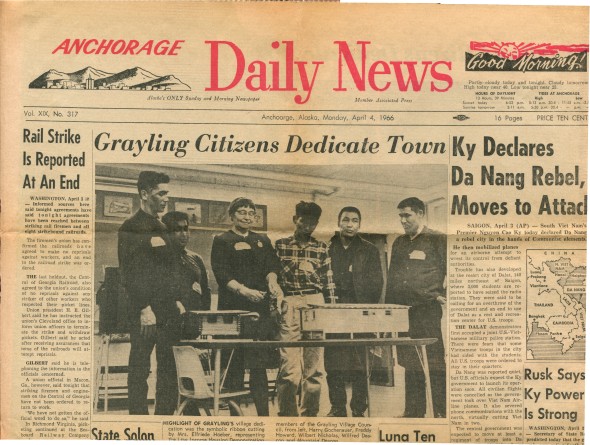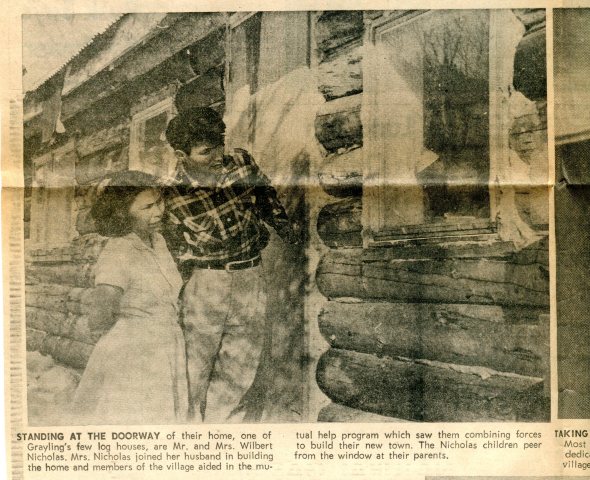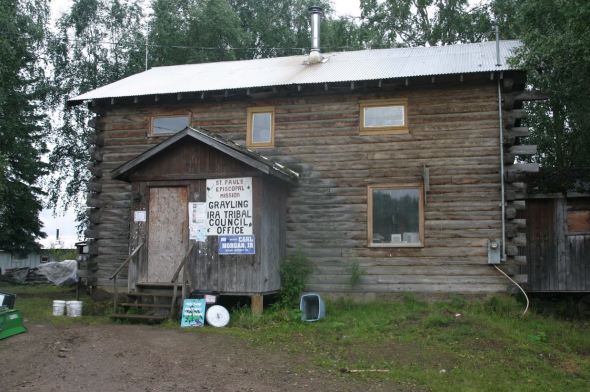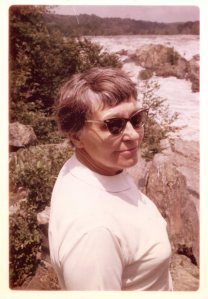New Houses for Native Alaskans — 1966
Posted: August 15, 2013 Filed under: Uncategorized | Tags: Alaska Natives housing, Elfriede Hoeber, Eskimo Housing, Grayling AK, Johnson Administration, Kennedy Administration, Public Housing, Yukon Bush Travel 4 CommentsTHIS POST WAS EDITED IN SEPTEMBER 2015 TO REFLECT CORRECTIONS GIVEN TO ME BY RESIDENTS OF ONE OF THE AREAS DISCUSSED IN THIS POST. PLEASE CLICK THE “COMMENTS” BUTTON TO UNDERSTAND MY READERS’ POINT OF VIEW.
My mother, Elfriede Hoeber, traveled to more than 65 countries in her lifetime, but her favorite trip was to two small, hard-to-reach towns in the remote country of Alaska. In the mid-Twentieth Century, social progressives regarded providing better housing as a major step to improving the lot of disadvantaged populations. Elfriede spent 25 years as an ardent advocate of government support for housing improvement. In 1963, she accepted a position in the Kennedy administration working in an experimental bureau called the Low Income Housing Demonstration Program. This small agency tried to aid under-served populations cheaply and efficiently. They experimented with rehabbing tenements in Harlem rather than tearing them down, building prefabricated homes in Apache towns in the Arizona desert and placing needy families in individual homes in suburbs rather than in public housing towers. The Housing Demonstration Program paid particular attention to pockets of rural poverty, which had received little government assistance up to that time.
One project was in the remote village of Grayling, Alaska, a settlement of the Holikachuk tribe of Athabaskan Indians (the term I was given by one of the residents there). Located four hundred miles west of Anchorage, Grayling’s population was then about 125. Most lived in conditions that would have been poor anywhere, but were particularly challenging in a place where winter temperatures drop to 40 degrees below zero. The town is in a forested area on the Yukon River. Word of Grayling’s housing problems made its way to the office of the Housing Demonstration Program in Washington DC, 5,000 miles away. Elfriede and the agency’s technical staff developed a plan in which trees were felled upriver from the development and floated down to the town where they were used to build log houses. The government provided kitchen equipment, doors, windows, hardware and the like at a cost of $2,500 per house. The Holikachuk people decided where to locate their own houses and did the building themselves.
When the project was completed, the agency decided there should be a formal ceremony to dedicate the new houses. Although Elfriede was a very smart writer and policy director, public speaking was not her favorite activity. Nevertheless, when she heard there was to be a trip to a remote Alaskan town she jumped at the chance to be the Federal government’s representative. She flew from Washington to Anchorage, where she was joined by Alaska state housing officials for the last leg into the town. Their seven-seater Porter plane landed on the frozen Yukon, where they were met by snowmobiles to carry them to the village. Elfriede was put up at the home of the head of the village council, a man by the unlikely name of Harry Gochenauer (perhaps this German-sounding name originated in the days Moravian missionaries came to the area in the early twentieth century). The principal meal consisted of moose meatloaf, which Elfriede reported (to Washington officials, not her hosts) was “not a gourmet treat.” At the dedication ceremony in the village school, Elfriede was the honored guest who cut the ribbon symbolically stretched between two scale models of new village log houses. She later wrote to her Washington boss, “The entire village, babes-in-arms, children, parents, grandparents, had turned out for the occasion. It well warranted the front-page coverage and full-page picture spread which was given to the festivities by the Anchorage Daily News.”

Anchorage Daily News, April 4, 1966. Elfriede Hoeber, accompanied by village officials, cuts a symbolic ribbon between models of two of the log houses her agency subsidized. Click image to enlarge.

Elfriede with Grayling kids outside the school, April 4, 1966. (Anchorage Daily News). (Click image to enlarge.)

Couple enters one of the new houses dedicated by Elfriede on April 4, 1966. (Anchorage Daily News) (Click image to enlarge.)
On her return to Washington, Elfriede wrote a report on her trip to inspect housing demonstration programs in Alaska. It is one of the more charming government reports you will ever read. Click on the link below the image to read in a larger format.

One of the main buildings in Grayling in 2013. Even today, the village can be reached only by plane, snowmobile or boat (when the Yukon thaws in the summer). (Click image to enlarge.)

